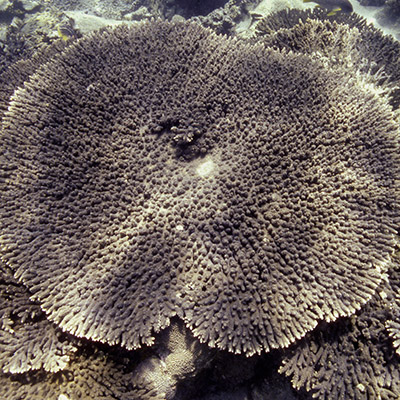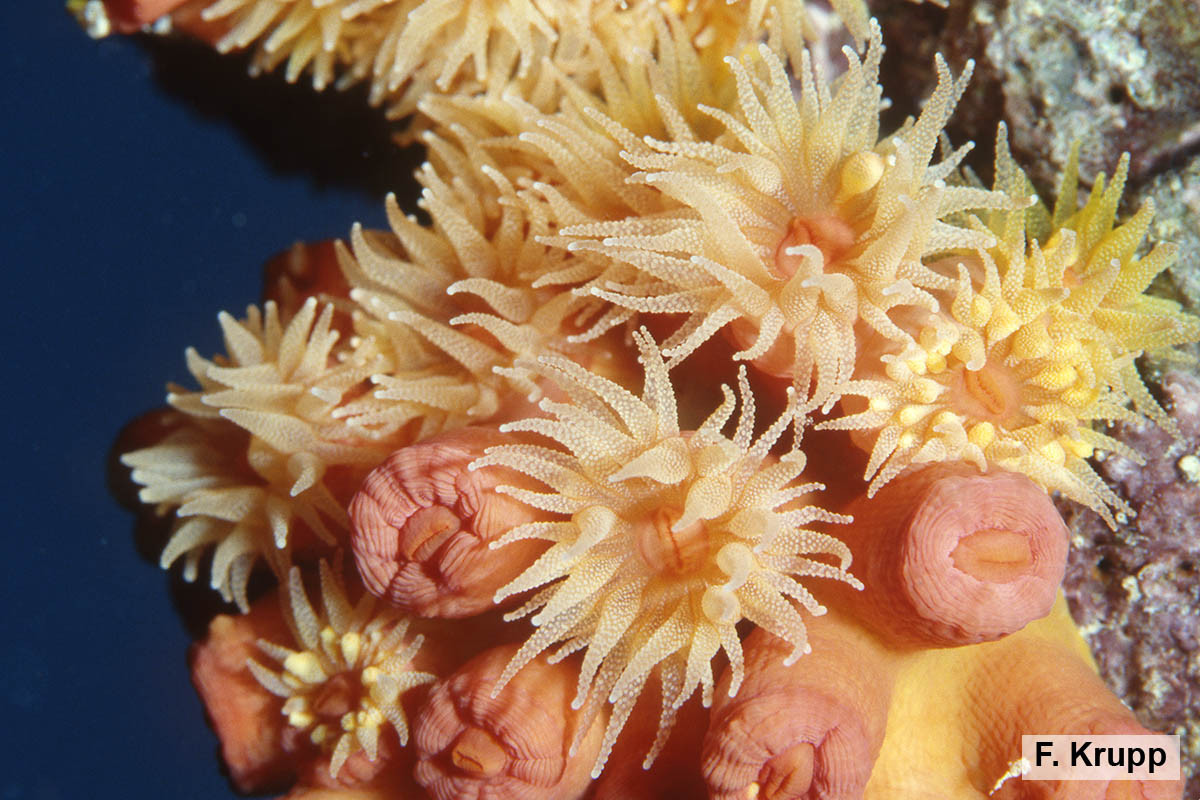الاسم: Tubastrea coccinea
الاسم المحلي: بالإنجليزية: مرجان الأنبوب البرتقالي.
الاسم الشائع:
الاسم العلمي: Tubastrea coccinea
التصنيف: الصف: الحيوانات الزهرية (Anthozoa)، الرتبة: المراجين الحجرية (Scleractinia). العائلة: المراجين الكأسية (Dendrophylliidae).
ترادف: يعتبر النوع Tubastrea aurea مرادف.
القياس: يصل قطر المستعمرات لهذا النوع إلى 14 سنتيمتراً، وتبرز المريجات إلى حوالي خمسة سنتيمترات فوق القاعدة وتصل إلى 12 مليمتراً في العرض.
موطن:
يعيش هذا النوع في المسطحات المظللة كأسفل الصخور الكبيرة والكهوف التي تقع على أعماق تصل إلى 40 متراً. وفي بعض الأحيان تسود مستعمرات هذا النوع في الموائل غير المشغولة بأنواع أخرى من المرجان. تمتلك العينات التي تعيش في المياه العميقة الهادئة مُريجات أكبر من تلك التي تعيش في المياه الضحلة وذات الطاقة المرتفعة. يستعمر مرجان الأنبوب البرتقالي أيضاً التراكيب الإصطناعية. هذا النوع ذو تغذية متغايرة وعلى النقيض من معظم أنواع المراجين الحجرية في قطر، فهو لا يحتوي على الطحالب التكافلية، والتي تسمى زوكزانثلي في أنسجته. وعادةً ما تبسط ملامِسها الجميلة في الليل.
التوزيع:
ينتشر هذا النوع على نطاق واسع في المحيط الهندي وغرب المحيط الهادئ، ويشمل ذلك الخليج العربي، كما تم إدخاله إلى المناطق الإستوائية من المحيط الأطلسي.
حالة حفظ النوع:
لم يتم تقييم هذا النوع حتى الآن من قبل المجلس العالمي لصون الطبيعة. ويعتبر هذا النوع شائع وغير متأثر بظاهرة إبيضاض المرجان.
الشرح:
يعتبر هذا النوع من المراجين التي لا تبني حيود، وهو مرجان بوليبي حجري كبير يشبه شكله الوسادة أو يُكّون مجموعة منخفضة وكثيفة من المريجات المتشعبة والناشئة من القواعد الضيقة نسبياً. وتكون هذه المُريجات بوقية الشكل ومستديرة. تترتب الحواجز في أربع دورات مُنظّمة، ويكون جدار العُوميد محزز بأسنان حادة. لون النسيج الذي يغطي الهيكل أصفر - برتقالي إلى برتقالي قاتم أو أحمر، بينما يكون لون الملامس الشفافة برتقالي فاقع أو أصفر.








